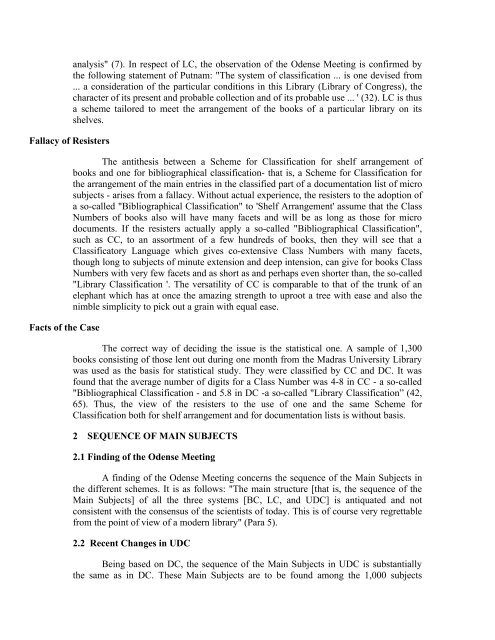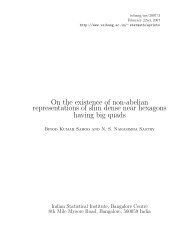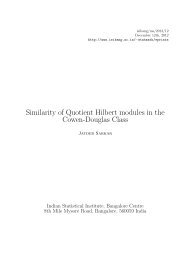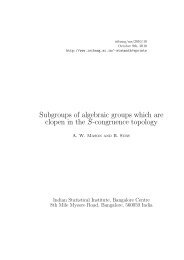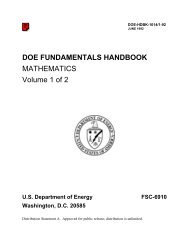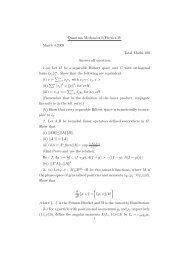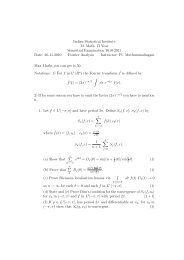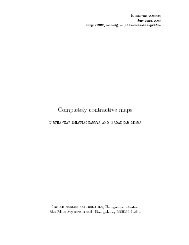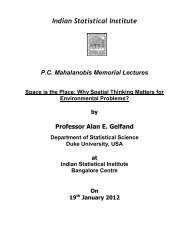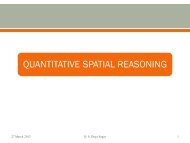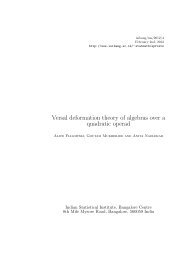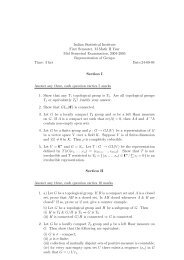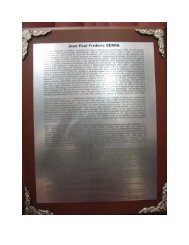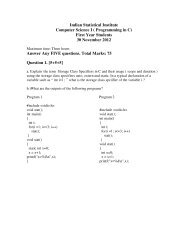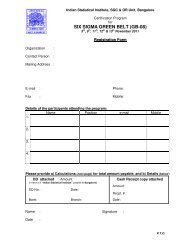CHOICE OF SCHEME FOR CLASSIFICATION - Indian Statistical ...
CHOICE OF SCHEME FOR CLASSIFICATION - Indian Statistical ...
CHOICE OF SCHEME FOR CLASSIFICATION - Indian Statistical ...
You also want an ePaper? Increase the reach of your titles
YUMPU automatically turns print PDFs into web optimized ePapers that Google loves.
Fallacy of Resisters<br />
Facts of the Case<br />
analysis" (7). In respect of LC, the observation of the Odense Meeting is confirmed by<br />
the following statement of Putnam: "The system of classification ... is one devised from<br />
... a consideration of the particular conditions in this Library (Library of Congress), the<br />
character of its present and probable collection and of its probable use ... ' (32). LC is thus<br />
a scheme tailored to meet the arrangement of the books of a particular library on its<br />
shelves.<br />
The antithesis between a Scheme for Classification for shelf arrangement of<br />
books and one for bibliographical classification- that is, a Scheme for Classification for<br />
the arrangement of the main entries in the classified part of a documentation list of micro<br />
subjects - arises from a fallacy. Without actual experience, the resisters to the adoption of<br />
a so-called "Bibliographical Classification" to 'Shelf Arrangement' assume that the Class<br />
Numbers of books also will have many facets and will be as long as those for micro<br />
documents. If the resisters actually apply a so-called "Bibliographical Classification",<br />
such as CC, to an assortment of a few hundreds of books, then they will see that a<br />
Classificatory Language which gives co-extensive Class Numbers with many facets,<br />
though long to subjects of minute extension and deep intension, can give for books Class<br />
Numbers with very few facets and as short as and perhaps even shorter than, the so-called<br />
"Library Classification '. The versatility of CC is comparable to that of the trunk of an<br />
elephant which has at once the amazing strength to uproot a tree with ease and also the<br />
nimble simplicity to pick out a grain with equal ease.<br />
The correct way of deciding the issue is the statistical one. A sample of 1,300<br />
books consisting of those lent out during one month from the Madras University Library<br />
was used as the basis for statistical study. They were classified by CC and DC. It was<br />
found that the average number of digits for a Class Number was 4-8 in CC - a so-called<br />
"Bibliographical Classification - and 5.8 in DC -a so-called "Library Classification” (42,<br />
65). Thus, the view of the resisters to the use of one and the same Scheme for<br />
Classification both for shelf arrangement and for documentation lists is without basis.<br />
2 SEQUENCE <strong>OF</strong> MAIN SUBJECTS<br />
2.1 Finding of the Odense Meeting<br />
A finding of the Odense Meeting concerns the sequence of the Main Subjects in<br />
the different schemes. It is as follows: "The main structure [that is, the sequence of the<br />
Main Subjects] of all the three systems [BC, LC, and UDC] is antiquated and not<br />
consistent with the consensus of the scientists of today. This is of course very regrettable<br />
from the point of view of a modern library" (Para 5).<br />
2.2 Recent Changes in UDC<br />
Being based on DC, the sequence of the Main Subjects in UDC is substantially<br />
the same as in DC. These Main Subjects are to be found among the 1,000 subjects


